
What are the top private graphic design schools in the U.S. for 2021?
| Ranking | School | State | Top % |
|---|---|---|---|
| 1 | Rhode Island School of Design | Rhode Island | 1% |
| 2 | ArtCenter College of Design | California | 1% |
| 3 | School of Visual Arts | New York | 1% |
| 4 | The New School’s Parsons School of Design | New York | 1% |
| 5 | Pratt Institute | New York | 2% |
| 6 | Yale University | Connecticut | 2% |
| 7 | Maryland Institute College of Art | Maryland | 2% |
| 8 | Savannah College of Art and Design | Georgia | 2% |
| 9 | Carnegie Mellon University | Pennsylvania | 3% |
| 10 | California Institute of the Arts | California | 3% |
| 11 | School of the Art Institute of Chicago | Illinois | 3% |
| 12 | California College of the Arts | California | 3% |
| 13 | Minneapolis College of Art and Design | Minnesota | 4% |
| 14 | Ringling College of Art and Design | Florida | 4% |
| 15 | Washington University in St. Louis | Missouri | 4% |
| 16 | Otis College of Art and Design | California | 4% |
| 17 | Cooper Union | New York | 5% |
| 18 | Brigham Young University | Utah | 5% |
| 19 | University of Southern California | California | 5% |
| 20 | Kansas City Art Institute | Missouri | 5% |
| 21 | Boston University | Massachusetts | 6% |
| 22 | Academy of Art University | California | 6% |
| 23 | Rochester Institute of Technology | New York | 6% |
| 24 | College for Creative Studies | Michigan | 6% |
| 25 | Columbia College Chicago | Illinois | 7% |
| 26 | Syracuse University | New York | 7% |
| 27 | The University of the Arts | Pennsylvania | 7% |
| 28 | Columbus College of Art and Design | Ohio | 7% |
| 29 | Milwaukee Institute of Art and Design | Wisconsin | 8% |
| 30 | Northeastern University | Massachusetts | 8% |
| 31 | Rocky Mountain College of Art and Design | Colorado | 8% |
| 32 | Tulane University | Louisiana | 8% |
| 33 | Full Sail University | Florida | 9% |
| 34 | University of Notre Dame | Indiana | 9% |
| 35 | Vermont College of Fine Arts | Vermont | 9% |
| 36 | University of Miami | Florida | 9% |
| 37 | Baylor University | Texas | 10% |
| 38 | Drexel University | Pennsylvania | 10% |
| 39 | Laguna College of Art and Design | California | 10% |
| 40 | Texas Christian University | Texas | 10% |
| 41 | DePaul University | Illinois | 15% |
| 42 | Pacific Northwest College of Art | Oregon | 15% |
| 43 | Cleveland Institute of Art | Ohio | 15% |
| 44 | Woodbury University | California | 15% |
| 45 | University of San Francisco | California | 15% |
| 46 | Loyola University of New Orleans | Louisiana | 15% |
| 47 | University of Dayton | Ohio | 15% |
| 48 | American University | DC | 15% |
| 49 | American Academy of Art College | Illinois | 15% |
| 50 | Pennsylvania College of Art and Design | Pennsylvania | 15% |
Our 2021 list of the Top 50 Private Graphic Design School Programs in the US. We considered over 400 private colleges with graphic design programs for this year's rankings. For an explanation of ranking criteria, click here.
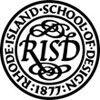
Founded in 1877, Rhode Island School of Design (RISD) is one the nation’s first art and design schools. The school serves just over 2,200 students from around the world enrolled in undergraduate and graduate degrees in more than 20 majors, a certificate program, and one concentration. RISD also offers a large collection of continuing education courses that attract around 5,800 students each year.
Degree programs are offered in Architecture, Art Education, Design or Fine Arts. RISD’s most popular programs are Graphic Design, Film/Animation/Video (FAV), Illustration, Industrial Design, and Painting. Aspiring graphic designers have two options: the four-year undergraduate BFA and the graduate MFA with two tracks.
One of the largest departments at RISD, Graphic Design serves approximately 165 students and features dedicated studios in the Design Center where they “learn the fundamental value of typography, imagery, grids, systems and more in the course of creating everything from traditional books, posters, logos and websites to apps, interactive texts and other digital media,” says the school. Programs are offered at the undergraduate and graduate levels, including a four-year BFA in Graphic Design and two- and three-year Tracks leading to the MFA in Graphic Design.
The core BFA curriculum “builds a range of analytical, formal, sensory and technical design experiences. Sophomores begin exploring visual principles of form, image, color and typography.” During their junior year, students will focus on “conceptual thinking in areas such as communication theory, visual systems and information design.” The final year of the program focuses on “design applications, with a range of electives available to expose students to specific areas of graphic design practice.” Upper level students also have opportunities to pursue professional internships.
The MFA Tracks provide the same opportunities as the BFA does, but the program allows students to tailor individual courses of study through cross-disciplinary electives. MFA students will also complete the Graduate Studio and Graduate Seminar Sequences. Course highlights include Graduate Form, Graduate Type Design, and Graduate Type Typography. Both MFA Tracks require a Thesis.
Graduates of all programs enjoy a high employment rate. Around 96% of all RISD graphic design graduates are employed one year after graduation, and 70% are employed in positions directly related to their major.

Founded in 1930, ArtCenter College of Design has campuses in Berlin and Pasadena, and satellite studios in Los Angeles at the Peterson Automotive Museum. The school serves approximately 2,250 students representing more than 40 countries. Academic offerings include 11 undergraduate and seven graduate degree programs in a variety of Applied Arts, Industrial, and Visual Design Disciplines. A joint MS/MBA program with the Drucker-Ito School of Management is also available.
Programs for aspiring graphic designers include BFA and MFA degrees in Graphic Design (Gx) and a 132-unit Designmatters Minor. The undergraduate graphic design program prepares students for careers in print and branding, packaging and environmental graphic design, motion and visual interaction design, transmedia, and spatial media. Course highlights include Information Design, Materials of Art and Design, Motion Design, Narrative Imaging, Package Design, Transmedia, and Visual Interaction Design. Students will complete 87 studio units, which allows them to create an emphasis area through electives. All students will have the opportunity to complete a portfolio and career preparation courses.
The graduate program, known as MGx, has two- and three-year options. The two-year option is five terms and the three-year option is seven terms. Students who need additional design skills typically choose the three-year program. Both programs require a thesis, Graduate Studio, Graduate Seminar, Professional Leadership, and Graduate Portfolio courses. MGx students also have the opportunity to complete Graphic Design Internship OR Studio Independent Study OR Testlab Berlin.
ArtCenter Gx graduates “are highly sought after by the most exciting and disruptive global brands,” says the school. They have been hired at Uber, Tesla, Google, Facebook, Nike, and creative agencies such as IDEO, R/GA, Local Projects, “and other future-forward organizations.”
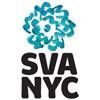
The School of Visual Arts (SVA) opened in 1947 with just three teachers and 35 students (mostly World War II veterans). Known as the Cartoonists and Illustrators school, the school employed New York City-based professionals working in the arts as faculty—a practice that continues today.
SVA currently serves 7,000 students enrolled in 31 programs. Offerings for aspiring graphic designers include a BFA in Design and a Design/Designer as Entrepreneur MFA. The BFA Program “is a multidisciplinary educational system in itself, offering separate majors that include Graphic Design, Motion Graphics, Interaction Design and 3D Design,” says the school.
The program can be further divided into package design, editorial design, information graphics, corporate identity, publication design, CD packaging, book jacket design, environmental design and website design. Other program highlights include intensive one-week workshops, exhibitions that are routinely covered by NBC, CBS. ABC, and CNN, competitions, enrollment in the AIGA (American Institute of Graphic Artists) and the Art Directors Club—two of the most prestigious design organizations in the country, industry review, and internships.
The Design/Designer as Entrepreneur MFA “inspires” students to conceive, produce, brand and market their own innovative content. Interaction, motion graphics, branding, and user experience are covered as well as typography as a visual language, video and new media directing, and art book and digital publishing. Students will also take classes in business, marketing, ethnography, strategy, research, advertising, promotion, intellectual property and networking.
The MFA program includes “advanced instruction in a variety of authoring skills, such as writing, editing, criticism, typography as a visual language, Film and new media directing, visual journalism and book and magazine publishing,” during the first year. Students will also take courses in marketing, research, advertising, promotion, publicity, intellectual property and networking. In the second year of the program, students will design and write a proposal for a product that will be presented to a panel of "guest faculty" who will decide whether it has enough merit to progress to the developmental stage. In this stage, “students will produce a prototype for backers, publishers, producers or distributors. Working individually, this final proposal, dummy or prototype will be professionally produced for presentation purposes.”
Graduate students will have access to the SVA MFA studios, open 24 hours a day and “designed to simulate an operational design/media firm with spacious workstations that allow for individual and collaborative work.”
Graduates of the SVA Graphic Design Programs have gone on to work for commercial and not-for-profit corporations, institutions and businesses. Many founded their own start-ups, design firms and studios. Some have become partners in businesses and individual projects. Graduates have started over 50 design studios around the globe.

The New School was founded in 1896 as The Chase School by American Impressionist William Merritt Chase. In 1904, Arts Educator Frank Alvah Parsons joined the school, later becoming its sole director. Between 1904 and 1910, parsons launched an Advertising Program, Costume Design and Interior Decoration.
Today, known as The New School/Parsons, this art and design college serves 5,100 students enrolled in 130 degree and diploma programs across five schools including the Schools of Art and Design History and Theory; Art, Media, and Technology (AMT); Constructed Environments; Design Strategies, and the School of Fashion.
The School of Art, Media, and Technology offers several degree programs for aspiring graphic designers including AAS, BFA and MPS degrees in Communication Design. The School of Continuing & Professional Education offers a Graphic and Digital Design Certificate. The program, which consists of eight courses, can be completed online or through a combination of online and on-campus courses.
The curriculum for the 60 credit hour AAS in Communication Design program (formerly Graphic Design) “is grounded in typography and interaction design for print and digital media, integrating socially responsible technology-driven design approaches,” says the school. Course highlights include Design History & Practice, Interaction, and Typography. The program consists of a Professional Practices & Portfolio course and a Capstone is required. Students in the program have the option to take an elective or complete an internship.
The Communication Design BFA is the oldest undergraduate program of its kind in the U.S. The program begins with “an intensive study of typography and interaction.” Students will expand their “expertise in brand and editorial design, digital products, type design, motion graphics, and spatial graphics.” Course highlights for the program include Drawing/Imaging, Interaction Studio, Sustainable Systems, and Visual Culture (Advanced Research Seminar).
The one-year, 30 credit hour MPS program offers a concentration in Digital Product Design. This graduate program “combines instruction in advanced interaction design with coursework that develops your user-experience, design-thinking, and collaboration abilities.” Students will graduate with “industry-ready conceptual and front-end development skills and a network of design professionals to help” them “advance in or enter a rapidly growing field.”
Career opportunities for Communication Design graduates include Digital Product Design, Graphic Design, Interaction Design (IxD), Product Development or Management, and User Experience (UX) Design, to name a few.

Founded in 1887, Pratt Institute is situated in the historic Clinton Hill section of Brooklyn, New York. The school, which prepares its nearly 5,000 students for careers in architecture, art, design, information science and liberal arts, and liberal arts and sciences, offers more than 25 undergraduate degree programs and concentrations along with more than 26 graduate degree programs. In addition to the Brooklyn campus, programs are offered at campuses in Manhattan and Utica, New York.
At the main campus in Brooklyn, students are enrolled in programs in the schools of Architecture, Art, Design, and Liberal Arts and Sciences. Founded in 2014, The School of Design offers “up to four of Pratt’s oldest and most esteemed disciplines,” says the school, including Communications Design (BFA, MFA), Fashion Design, Industrial Design, and Interior Design. The School of Art offers an Associate of Occupational Studies (AOS) in Graphic Design and an AAS in Graphic Design/Illustration. All programs offer the opportunity to complete an internship.
The AOS is an intensive 69 credit hour program integrates “the best of new media and technologies with a strong commitment to a traditional art and design curriculum.” This career track option takes just two years to complete. The AAS program is also 69 credit hours. Students in the program” follow an exciting art and design curriculum that includes a liberal arts component.” This positions students to transfer to Pratt’s Fine Arts Department or the BFA in Communications Design.
In the Communication Design Program, “students learn to engage audiences, explore technologies, develop visual languages, challenge preconceptions, redefine problems, and identify opportunities through the lens of communication design.” Students in the BFA program have the opportunity to choose a focus area. Options include Graphic Design, Illustration, and Advertising Art Direction.
Graphic Design students will “explore topics and modes of practice, such as typographic and identity systems, visual rhetoric, interactivity, experience design, sustainability, and inclusivity.” Projects in the program “encourage critical inquiry, collaborative processes, and experimentation with multiple technologies and platforms.” Through electives students can explore a “wide spectrum of specializations in graphic design, including user experience, motion graphics, type design, independent publishing, data visualization, and post-artifact books.”
The 60 credit hour MFA in Communications Design emphasizes studio practice in graphic design—communications, identities, objects, environments, and systems. Graduates are prepared to enter careers in print and digital media, typography, identity systems and branding, design strategy, social media and interaction design, motion design, environmental design, data visualization, information design, and user experience design.
For aspiring graphic designers seeking an advanced degree with a specific focus, the School of Design-Communications Design Program offers a MS in Package Design. First offered in 1966, this 48 credit hour program is an initial master’s degree that offers students structured courses on the decision-making process for new product and package development, featuring direction in package design, typography, brand development, marketing, structural packaging, packaging technology, fragrance packaging, and the business aspects of the package industry. This is a full-time program, which culminates in a capstone thesis project.
For students who are not yet ready to commit to a degree program, the School of Continuing and Professional Studies (SCPS) offers Certificate Programs in Digital Design including Graphic Design, Digital Product Design, Human-Centered Design, Motion Graphics, and many others. These programs may be taken individually or “stacked,” producing an “accelerated path to completion.” Like the undergraduate and graduate Communication Design/Graphic Design programs, Certificate programs offer the opportunity to complete an internship.
Students in all programs will have the opportunity to enroll in one of more than 20 study abroad programs and international exchange programs in over a dozen locations such as Florence, Milan, Copenhagen, London, and Tokyo.
Graduates of the Graphic Design and Communication Design Programs at Pratt are “equipped to pursue a spectrum of exciting career paths as creative professionals.” Pratt alumni “continue to distinguish themselves in design studios, cultural institutions, branding agencies, and independent enterprises making significant contributions to the fields of art and design, publishing, education, film, gaming, advertising, and many more.”

Founded in 1701, Yale University serves nearly 13,600 students enrolled in dozens of programs in the areas of art, architecture, divinity, drama, forestry and environmental studies, law, management, music, public health, and more. The school, which houses more than 145 departments and schools, is home to one of the most prestigious fine arts schools in the U.S.
Established in 1869, Yale School Art was the nation’s first art school connected with an institution of higher learning. With an enrollment of more than 100 students, the school offers a BA in Art and MFA degrees in Graphic Design, Painting and Printmaking, Photography, and Sculpture. An interdisciplinary Film & Video program is also available.
The BA in Art offers the opportunity for intensive study leading to greater specialization in one or more areas such as Graphic Design, Painting/Printmaking, Photography, and Sculpture. Course highlights for the program include Advanced Graphic Design, Communicating with Time, Motion, and Sound, Graphic Design Methodologies, Interactive Design and the Internet, Intermediality: Typography, Motion, and Meaning, Introduction to Graphic Design, Letterform, Mobile Computing, Moving Image Methods, Print to Screen, Programming as Writing, Visual Thinking, and Writing as Metadata. Students in the program will complete a Sequence: Exhibition Design, which will allow them to showcase their designs.
The Yale Graphic Design MFA (Yale GDMFA) is a 60 credit hour program that accepts just 12 students each year and up to six students into the preliminary-year program. MFA applicants for this competitive program are expected to have “substantial and distinguished experience in visual studies and related professional experience,” says the school. Students can expect support for their graphic design collections in several ways including, “studio work led by faculty meeting weekly, small five- or six-person thesis groups meeting biweekly, and individual sessions with writing and editing tutors.”
Lectures, presentations, and workshops are also part of the program as well as access to “extraordinary” resources including Yale University courses, conferences, films, lectures, museums, and the “extensive” research and rare book collections of Sterling and Beinecke libraries. Students also have a designated workspace in the design studio loft and access to equipment including bookbinding materials, wide format printers, a RISO duplicator, Vandercook press, and workspaces in the School of Art buildings. More resources supporting interdisciplinary projects including motion capture and VR are available at the nearby Center for Collaborative Arts and Media.
The Yale Graphic Design MFA takes two years to complete, full-time.
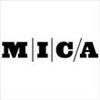
Founded in 1826, Maryland Institute College of Art (MICA) is the nation’s oldest independent, continuously degree-granting college of art and design. The College enrolls nearly 3,500 students and each year, it attracts more than 175 visiting artists, critics, designers, poets, writers, and art historians from across the U.S. and around.
MICA offers around 80 programs leading to the BFA, MA, MFA, or MPS degree. Study areas include art education, design, electronic media, fine arts, liberal arts, and professional studies. A number of post-baccalaureate certificate programs are also available.
Programs for aspiring graphic designers include a BFA in Graphic Design with three Concentrations including Graphic Design Studio, Book Arts Studio, and Graphic Design + Humanistic Studies, an MA in Graphic Design (GDMA) and an MFA in Graphic Design (GD MFA).
The undergraduate graphic design curriculum at MICA features a three-year sequence of core design courses. Highlights include Body/World Machine, Cartographies, Color/Design/Process, Haptics and Optics, PhotoImaging, and Typography. Graduates of the program will have the skills and experience needed to create designs for books, magazines, apps, websites, posters, advertisements, games, logos, film titles, and many other media.
The 60 credit hour MFA program features two years of full-time study that that the school says combines “critical seminars, guided studio courses, and independent work.” Students in the MFA program may “take advantage of electives in many MICA departments, including video, printmaking, and digital media,” to create a focus.
The MA program prepares students for advancing their careers and/or for applying to the competitive MFA. Program highlights include an “intensive introduction to design,” provided by the GDMA Studio, “taught with a strong emphasis on design fundamentals, process, visual research, and working across media,” a Design Theory and Practice Seminar, and the GDMA Workshop. Through the workshop, GDMA students will have the opportunity to create and exhibit a self-directed design project and a professional portfolio.
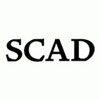
Founded in 1978 in a renovated armory, Savannah College of Art and Design (SCAD) has grown into a multi-campus art college with locations in Savannah and Atlanta, Georgia, Hong Kong, and Lacoste, France. The school, which serves more than 15,000 students from all 50 states and more than 100 countries, offers more than 40 majors and over 75 minors. This is more degree programs and specializations than any other art and design college.
SCAD also offers more graphic design programs than just about any other school in our rankings. Options include BA, BFA, MA, and MFA degrees in Graphic Design and Design Management MA and MFA programs. A Minor in Graphic Design is also available.
All programs highlight Entrepreneurship, User Experience and Interface Design (UX/UI), Mobile Technology, and Product Packaging. Students have the opportunity to declare a double major in the areas of Advertising, Branded Entertainment, Illustration, Motion Media Design, Sequential Art and more, and access to Minors such as Advertising and Branding, Advertising Copywriting, Mobile and Interactive Design, and Motion Media Design. Students may complement their degree with a Certificate in Digital Publishing as well.
All graphic design students will “learn how to weave entrepreneurship and modern technology with product and user-centered design,” says the school. They will “learn from titans of the industry at Airbnb, Google, Hasbro, and more” Students will also “gain an all-access pass to leading-edge resources and star-studded signature events like SCADstyle, attended by luminaries from global art, fashion, and modern design.”
The Graphic Design programs and Minors are offered in Atlanta, Savannah, and online via eLearning. The Design Management MA is offered at Savannah and online, and the MFA is offered in Savannah.
SCAD graduates are prepared to join elite agencies, multinational companies, or start their own businesses as they lead branding, visual marketing, interactive media, and immersive campaigns. Graduates work at top companies around the globe including Apple, IBM, Ralph Lauren, Under Armour, Verizon, and many others.

Carnegie Mellon University (CMU or Carnegie Mellon) is a global university with more than a dozen degree-granting locations, and more than 20 research partnerships. Just a few locations include Silicon Valley, Africa, Qatar, and Australia. Founded in 1900 by industrialist and philanthropist Andrew Carnegie, the school has produced 10 Academy Award winners, 50 Tony Award Winners, and 20 Nobel Laureates. CMU is also the former home of one of the world’s most famous artists—Andy Warhol.
serving around 14,800 students, Carnegie Mellon offers 80 majors and over 90 minors within its six undergraduate schools, colleges, and inter-college degree programs. The College of Fine Arts (CFA), which houses the School of Design, was the first comprehensive training institution in the country.
Here, aspiring graphic designers can earn a Bachelor of Design (BDes), formerly BFA, with a Communications, Products or Environments Track. Students may focus in one or all three areas or pursue a more interdisciplinary focus that combines two of the three.
Other undergraduate options include the Minor in Design Application and the Undergraduate Interdisciplinary Degree known as “BXA,” which provides students with the ability to evenly balance their study of humanities or sciences with design. While BXA majors may take 26 design courses and 15 outside courses, most BXA students take 12 design courses, with the balance of their courses taken outside of the School of Design. The Minor is for students admitted to other programs on campus who are interested in gaining “fundamental design skills and/or exposure to design.”
“CMU also offers a unique program called Integrative Design, Arts, and Technology (IDeATe), which allows student to concentrate their studies on cross-campus industry themes like game design, animation and special effects, innovation and entrepreneurship, intelligent environments, and learning media design.”
Graduate options include a one-year Master of Arts (MA) in Design program, a one-year Master of Professional Studies (MPS) in Design for Interactions, a two-year Master of Design (MDes) in Design for Interactions program (includes a one-year thesis project), a PhD in Design, and a Professional Doctor of Design (DDes) (distance learning with intensive residential components). The graduate programs are interdisciplinary and offer studio and seminar courses as well as hands-on exposure to design processes, skills, and thinking.
Students in the graduate programs can expect to take courses such as Design Principles and Practices, Prototyping for Interaction Design, Seminar: Design Thinking, and Studio: Visual Communication Fundamentals. Students may complement their skills and knowledge with elective courses outside of design. Courses in interaction or communication design, policy, business, service or social innovation, or professional writing are recommended.

California Institute of the Arts (CalArts) opened its doors in 1970. Founded by Roy and Walt Disney, the school began as a multidisciplinary community of artists. Today, the school offers degree programs in art, design, film, music, theater, and dance, and is the nation's first postsecondary institution to offer graduate and undergraduate degrees in both the visual and performing arts.
Serving just over 1,500 students, CalArts provides more than 70 degree programs, including the unique Doctor of Musical Arts (DMA). Programs are administered within six schools including the School of Critical Studies, The Sharon Disney Lund School of Dance, the School of Art, the School of Film/Video, The Herb Alpert School of Music, and the School of Theater. The School of Art houses the Graphic Design Program, which has BFA and MFA options. A Digital Arts Minor and an Interschool Degree option are also available.
The Minor is “designed to help undergraduate students grasp the knowledge to build, engineer and design innovative custom systems,” says the school. The Interschool Degree Option is available to a small number of graduates and advanced third- and fourth-year undergraduates whose skills and artistic interests warrant pursuing a degree in more than one School.
The BFA program is a full-time, four-year program that prepares students for a career in print and publication design, web and interface design, motion graphics for broadcast and film, branding, identity and type design, and design history and education. Each year in the program, “builds on the experience of the previous as a sequence of additional classes explore image-making, typography and design history. Baseline coursework is followed by more specialized classes in areas such as web design, motion graphics, and type design.” In addition to core studio classes, all candidates in the Program are required to pass a Graduation Portfolio Review in order to complete the program and obtain the BFA degree.
The MFA program offers two- and three-year options. During the two-year program, students deepen and refine their work through a set of required and elective courses covering subjects such as type design, web design, typography, motion graphics, design theory and design history. Students will also work with visiting designers on short-term projects within the focused studio environment.
“The three-year program is designed for students who do not have a Graphic Design undergraduate degree, but who typically demonstrate a talent and enthusiasm for design, and a level of expertise in their given field. The heart of the Program is the Visual Literacy course, a critique class comprised of a series of structured projects designed to teach design principles, process, methodology and skills.” Students in both programs are required to pass a Thesis Review to obtain the MFA degree.
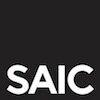
The School of the Art Institute of Chicago (SAIC) is one of the oldest accredited independent schools of art and design in the country. Founded in 1866, the school has been recognized as “the most influential art college in the United States,” by Columbia University’s National Arts Journalism survey.
More than 3,000 students are enrolled in more than 50 areas of study in 24 departments at SAIC. The Visual Communication Design Department (VCD) houses the Visual Communication Design Program, which offers BFA and MFA degrees in Studio with a Visual Communication Design Pathway. A Post-baccalaureate 30 credit hour Certificate in Studio is also available and can serve as a track into the MFA program.
The BFA program has two major areas of focus: Physical Media (environments, print, and objects) and Virtual Media (interactive and time-based media). This includes books/bookbinding, coding/programming/scripting, data visualization/diagrams/maps, design issues, film titles and fonts, identity systems, illustrations, image text narrative, installations/wayfinding signage, and interface design. Other components include letterpress printing, methodologies, museum exhibitions/kiosks, packages/package graphics, posters, print production and offset printing, digital/screen-based production, publications/magazines, strategy, symbols/web icons, theory, typography, websites/design for mobile phone and tablets, and video.
In the MFA program, faculty “guide students in self-initiated work that explores issues of personal interest and cultural/social significance.” This 60 credit hour program offers the opportunity to explore other related departments at SAIC such as Architecture, Interior Architecture, and Designed Objects; Film, Video, New Media, and Animation (FVNMA); Photography; Printmedia; and Writing. The purpose of this opportunity is to “extend students’ design work into new territories.”
Other Visual Communication Design Program highlights include an active AIGA (American Institute of Graphic Arts) student chapter, Exploratory Languages (a lecture series featuring leading designers and design educators from across the country), and CIPB (Chicago International Poster Biennial), which is an international competition representing leading designers from throughout the world. Internship and optional study abroad opportunities are also offered.

California College of the Arts (CCA) was founded in 1907 by a German-born cabinetmaker with links to the Arts and Craft Movement. Today, the school is one of America’s top art and design colleges with 100 full-time and 400 part-time faculty members that serve 1,850 students from 42 states and 49 countries. Degree options include 22 undergraduate and 11 graduate programs.
Options for aspiring graphic designers include BFA degrees in Graphic Design and Interaction Design, and an MFA in Design that focuses on Graphic Design, Industrial Design, and Interaction Design.
Highlights for all programs include the opportunity to immerse in the areas of Brand Identity, Motion Graphics, Print and Screen-Based and Interactive Design. Elective offerings will “strengthen” students “design toolkit,” says the school and CCAs extensive internship program provides real-world experience. Students have the opportunity to intern for design firms, publishing houses, and nonprofits as they work toward a polished thesis project.
“Situated within a top art college, the Graphic Design program also benefits from an atmosphere of hands-on making and experimentation. Students are constantly giving and getting feedback and testing their ideas with faculty, visiting experts, and peers.”
Students also benefit from CCAs location in the San Francisco Bay Area, home to Apple, Netflix, IDEO, YouTube, Pinterest, NASA, Google, and many other technology companies. Graduates of the Graphic Design Programs have landed positions at innovative design firms, museums, publishing houses, technology companies, nonprofits, and more.

Established in 1886, Minneapolis College of Art and Design (MCAD) houses more than 90,000 works of art representing 5,000 years of world history. The school’s more than 800 students have full access to these works along with creative spaces/classrooms, professional facilities, additional galleries, student housing complexes, artist studios, and a sculpture garden. Students also have access to 23 art and design degree programs and undergraduate minors. Degree programs lead to the BFA, BS, MA, or MFA.
Among the schools art and design programs are a BFA in Graphic Design, Post-Baccalaureate Certificates in Graphic Design and Interactive Design and Marketing, and an MFA in Visual Studies. A 30 credit hour MA in Graphic and Web Design is also available.
Students in the 120 credit hour BFA program “will develop their own voice and produce original work, they will research, engage with, and create innovative concepts, content, and form, and learn to communicate ideas visually,” says the school. They will have the opportunity to take electives outside of graphic design, complete a required internship to gain practical, real-world experience, participate in the Emerging Talent Showcase to share their work with potential employers, and complete a semester-long project to culminate in the Commencement Exhibition.
The 60 credit hour MFA program allow students to pursue creative work in Graphic Design, Illustration, Interactive Media, Paper and Book Arts, Printmaking, and more. Students will participate in opportunities “unique to MCAD’s MFA program” at art galleries, art centers, and nonprofits, designed to position students for success post-graduation. Most credits in the program are earned through one-on-one work with a faculty mentor who is an expert in the students chosen field. Optional internships are part of the program as well as a capstone thesis exhibition and paper in the final year.
Designed for motivated working adults, the 30 credit MA in Graphic and Web Design takes place entirely online. With small class sizes designed to encourage collaboration, courses for the program cover design principles, ideation, programming, ideation, research, typography, web design, workflow management, and more. Students can start in fall or spring, and take one or two classes per semester.
Students in all programs also have the option to study abroad in places such as England, Germany, Ireland, Italy, Japan, or anywhere in the U.S.
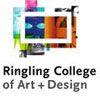
Founded in 1931, Ringling College of Art and Design (RCAD) is a collaboration between Dr. Ludd M. Spivey, president of Southern College (now Florida Southern College), and circus baron, John Ringling. On opening day, the school had just 75 students and 111 course offerings. Today, RCAD serves more than 1,600 students enrolled in BFA degrees in eleven disciplines and BA degrees in two. A number of Minors are also available.
Students in all programs benefit from RCAD’s “rigorous curriculum” that the school says “employs the studio model of teaching and immediately engages students through a comprehensive program that is both specific to the major of study and focused on the liberal arts.” Other highlights include visiting artists from major studios such as Blue Sky Studios and DreamWorks, focused internship opportunities, and the chance to work with local businesses (and at the school’s in-house design firm known as The Design Center) on real-world projects.
For aspiring graphic designers, RCAD offers a BFA and a 15 credit hour Minor in Graphic Design. Launched in 1980, the Graphic Design program allows students to collaborate with other artists such as copywriters, developers, illustrators, photographers, and printers “to make their ideas a reality,” says the school. Course highlights include Contemporary Design Culture, Design & Typography, Drawing & 2D Design, Drawing & 3D Design, Interactive Design, New Media Design, and Visual Persuasion. For Course GDES 491, students have three options: Design Center, an Internship, or Graphic Design Elective.
RCAD internships have led to many full-time employment opportunities. Graduates have been hired by companies such as Arc Worldwide, Facebook, Google, Instagram, Leo Burnett, Microsoft, Nickelodeon, Saatchi & Saatchi X, Studio BCC, Walt Disney Imagineering, Wieden + Kennedy, and many others.

Founded in 1853, Washington University in St. Louis serves nearly 15,000 students enrolled in more than more than 90 fields of study in seven schools. The Sam Fox School of Design & Visual Arts offers a BA in Design and BFA in Communication Design. The BA in Design is a 120 credit hour, collaborative program that allows students to experience design research and process through work in graphic design, interaction design, illustration, and fashion. Students can complete a broad design degree without a concentration, or choose a concentration in Communication or Fashion.
The BFA in Communication Design is a “collaborative program at the intersection of graphic design, illustration, and interaction design,” says the school. Students in this program can choose to design interfaces for mobile devices and the web, they can make pictures for games and motion graphics, or illustrate stories and create comics and design printed posters and books. Students can also choose to apply design skills to social problems in the community, including areas such as public health and urban education, or they may study the history of printed images, comics, and advertising through the Douglas B. Dowd Modern Graphic History Library.
The first year requires studio coursework in 2D and 3D design, digital design, drawing, and a weekly lecture course. Second year students explore disciplines across art and design, selecting from introductory courses in fashion design, graphic design, illustration, painting, photography, printmaking, sculpture, and typography.
Course highlights include Branding & Identity, Content to Cover: The Design of Books, Design for Social Impact, Enchanted Objects: Material Culture, Letterpress Printing, Pictures for Communication, Sculpting Realities, Visualizing Literature: Texture/Structure, and Visual Principles for the Screen. Professional Practice Seminars help students “develop essential skills like writing preparing a portfolio and CV, applying for internships and jobs, and presenting a public lecture” on their work.
The BFA Program culminates in a Senior Capstone, which may be an illustrated book, graphic novel/mini-comic, screen-based presentation, digital experience or zine. The final project is displayed in a public exhibition and reviewed by external design professionals.

Otis College of Art and Design (OTIS) was established in 1918 by founder and publisher of the Los Angeles Times General Harrison Gray Otis. Serving approximately 1,100 full-time students, OTIS is a private nonprofit institution and national leader in art and design education. “Alumni and faculty are Fulbright, MacArthur, and Guggenheim grant recipients, Oscar awardees, legendary costume designers, leaders of contemporary art movements, entrepreneurs, and design stars at Apple, Abercrombie & Fitch, Pixar, DreamWorks, Mattel, Nike, and Disney,” says the school.
OTIS offers 11 BFA degree programs including Architecture/Landscape/Interiors, Digital Media (Animation, Game and Entertainment Design, and Motion Design), Fashion Design, Communication Arts (Graphic Design, and Illustration), Fine Arts (Painting, Photography, and Sculpture/New Genres), Product Design, and Toy Design. OTIS also awards an MFA degree in Fine Arts, Graphic Design, Public Practice, and Writing, as well as a variety of minors and certificate programs.
The BFA in Graphic Design is offered through the Communication Arts Department. A Minor in Advertising Design and a Graphic Design Certificate are also available. Formats covered in the BFA Graphic Design Program include branding and logo development, posters, books, package design, apps, websites, and interactive design. Students in the program “learn to articulate a critical and theoretical perspective and develop graphic design skills, such as type design and traditional letterpress,” says the school. “Strong craft and presentation skills are emphasized throughout,” with students achieving “the highest level of design excellence through critiques, reviews, and workshops.”
Course highlights for the program include Advanced Image Making Projects, Communication Studio I-IV, Connections through Color and Design, Creative Action Studio, Drawing and Building Form, Systems and Identity Design, Type and Alternative Media, Typography, Visual Language, and Writing in the Digital Age. A Senior Thesis/Research Paper, Senior Project/Seminar, and Capstone are also part of the program.
The MFA in Graphic Design is an accelerated LA-based program that takes 14 months to complete. During the program, students learn to work across media and platforms through a series of visiting workshops, courses in design theory and history, studio projects, and round table discussions. “The coursework engages research, discourse, critical thinking, and iterative process with the goal of discovering many possible design outcomes. In so doing, the program supports students in taking on the challenges and opportunities in contemporary graphic design practice.”
Graduates of the Graphic Design programs at OTIS have landed positions at major companies and studios such as ABC, Inc. and Partners, Apple, Anthropologie, Capitol Records, Conde Nast Publications, Disney Consumer Products, GUESS?, Metro-Goldwyn-Mayer, Ogilvy Worldwide, Sony Music, Twentieth Century Fox, Warner Bros. Records, and Young & Rubicam.

The Cooper Union for the Advancement of Science and Art (Cooper Union or CU) was founded in 1859 by industrialist, inventor, and philanthropist Peter Cooper. Considered one of the most prestigious private institutions in the world, CU awards all admitted undergraduate students a half-tuition scholarship currently valued at $22,275 per school year.
Serving nearly 900 students, Cooper Union offers programs in the areas of Art, Architecture and Engineering, with 55% of undergraduates enrolled in engineering, 28% in art, 17% in architecture, and 81 graduates in the Maurice Kanbar Graduate Institute working toward the Master of Engineering (MEng) degree and Master of Architecture (MArch). The school also offers courses in the humanities and social sciences.
Cooper Union School of Art offers a flexible BFA in Art with a Specialization in Graphic Design. Students in the program may take elective studio classes and seminars, offered on a rotating basis, and they have the option to focus their work in one or more areas of specialization. Besides Graphic Design, options include Drawing, Film and Video, Painting, Photography, Printmaking, and Sculpture. Students may also enroll in advanced studio classes with the same course number multiple times.
The school says students are also “encouraged to follow an integrated approach by selecting from various areas while observing a prerequisite system designed to allow in-depth study in specific disciplines.” Other program highlights include internship and study abroad opportunities.

Founded in 1875 by The Church of Jesus Christ of Latter-day Saints (LDS), Brigham Young University (BYU) serves 30,745 undergraduate students—the largest undergraduate enrollment of any private university in the U.S. The school also serves close to 2,800 graduate students enrolled in 88 master's degree programs, and 32 doctorate programs. Around 187 undergraduate majors and 110 undergraduate minors are also offered in dozens of colleges and departments.
The College of Fine Arts and Communications, Department of Design offers a BFA in Graphic Design and a Graphic Design Fundamentals Certificate. The Certificate is 15 credit hours and includes the following courses: Introduction to Graphic Design, Typography, Graphic Design, Interaction Design, and Creating Online Media. The program prepares graduates for positions such as Design Assistant, Junior Graphic Designer, Junior Production Artist, and Marketing Production Artist.
The BFA in Graphic Design “simulates a professional studio experience with students working to solve complex visual problems” says the school. “As members of a small cohort group, students complete a variety of individual and collaborative projects under close faculty direction.” Course highlights for the program include 3D Design, Advertising, Bookbinding, Branding, Design Thinking, Entrepreneurship, Illustration, Interaction Design, Letterpress Studio, Motion 1 & 2, and Typography. Students in the program will complete the BFA Capstone Project and a required Professional Internship.
Student interns have the opportunity to apply their design skills in a real working environment, they will learn how to meet the needs of the client while preserving the integrity of the design principles they have learned in class, and interact with team members from all areas of expertise on a real-world project.
Graduates of this limited enrollment program (40 students) “will be able to create design solutions across multiple mediums, including print, interactive media, and film.”

Established in 1880, University of Southern California (USC) is a private research that employs 4,000 full-time faculty serving 46,000 students. More than 200 undergraduate programs and over 400 graduate and professional programs are offered at USC across more than 20 schools, colleges, and academic units. In addition to the Los Angeles campus, USC offers programs and has centers in Marina Del Rey, Orange County, Sacramento, Washington, D.C., Catalina Island, Alhambra, and around Southern California.
Programs for aspiring graphic designers are offered at USC Roski School of Art and Design. Founded in1895, Roski is one of the oldest art schools in Southern California. Degree options for designers include the BFA, MFA, and Dual BFA/MFA in Design. A Minor in Communication Design is also available.
The Design BFA is a four-year pre-professional that begins with foundation courses such as Drawing and Illustration. Students will gain experience “with a wide array of artistic media,” says the school, and participate in “skills-based workshops in 2D and 3D design-specific media.” Design coursework is “complemented by a series of critical theory seminars, professional design internships, and international design study tours,” along with “a senior thesis and Minors in Advertising, Business, Communication, Entrepreneurship and Marketing.” A required 26 units of electives allows students to refine their focus.
Course highlights for the BFA program include 3D Design Studio, Art and Design Studio, Digital Tools for Design, Illustration for Art and Design, Publication Design, Typography, and Web Design.
The Design MFA is a five-term, 56-unit studio-based program administered in collaboration with the Graduate School, It is a professional degree in the practice of design that highlights mentored relationships with design faculty, participation in regular seminars, and discussions and studio visits with leading visiting designers, writers and theorists from around the world. The Roski School's partnership and affiliation with the contemporary design community in Los Angeles, such as American Institute of Graphic Arts (AIGA), is also critical component of the MFA Design Program.
Students will complete an MFA Design Thesis and the opportunity to gain experience as a teaching assistant is available on a competitive basis. Field internship opportunities, design study tours to Asian or European cities, and the option to take Design Studio Co-Lab are other program highlights.
The 24-unit Communication Design Minor includes coursework in graphic design, advertising, marketing, and business. Course highlights include Advanced Design Projects, Business and Professional Communication, Communication and Social Media, Graphic Design in Fashion, Ideas in Intermedia, Marketing of Creative Disruption and Innovation, Special Projects in Design, and Video Installation and Moving Image Environments.
Students in the Communication Design Minor may also take advantage of the New York or International Design Study Tours.
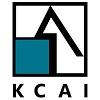
Kansas City Art Institute (KCAI) was established in 1885 as a Sketch Club. Today, this art and designs school serves nearly 700 students, enrolled in 13 BFA programs with courses taught by practicing artists, designers, and scholars.
KCAI offers a BFA in Graphic Design Program that balances “proficiency in software with essential hand skills, such as drawing, painting, collage, model making and experimental processes,” says the school.
Students in the program can expect an “immersive studio experience” and a “rigorous, diverse curriculum.” Course highlight Branding & Identity, Communication, Information and Data Visualization, Interaction, Media, Social Innovation, and Type and Image.
All students will have the opportunity to participate in KCAI’s internship program, three- to five-week long faculty-led travel programs, and full semester programs that can take them to one of several participating art and design colleges in the U.S. or abroad. These programs have allowed students to gain valuable professional experience in real world settings.
Graduates of KCAI’s Graphic Design Program have gone on to work with local and national design and advertising firms such as Airbnb, Barkley, Nickelodeon, Design Army, DMH, Fossil, Garmin, Hallmark, Hint, Hyperakt, Pentagram, Populous, Radius, R/GA, Salesforce, the Getty, and VML.

Boston University (BU) was established in 1839. The school houses nearly 35,600 students served by a faculty and staff of 10,000—making BU Boston’s largest employer.
With more than 300 programs of study offered in 17 colleges and schools, offers BFA, MFA, and Certificate Programs in Graphic Design. One of the programs in the College of Fine Arts’ School of Visual Arts is the Graphic Design BFA. The program “provides a sequenced studio approach to design, preparing students to thrive in a dynamic, creative professional environment,” says the school.
Students will begin the program with Foundations, which introduces “visual concepts in two and three dimensions, with an emphasis on drawing from observation.” In the second year of the program, students specialize in graphic design coursework, with yearlong graphic design and typography studios that emphasize form and communication. Third year students participate in graphic design and typography studios that “address authorship, audience, and medium.” Projects are completed in communal workspaces equipped with flat files, printers, and paper trimmers. “With training, students are also granted access to the School’s Printmaking facilities, which include etching, lithography, silkscreen, bookmaking, letterpress, and digital print studios.”
Students in the BFA program have the opportunity to complete coursework outside of the School of Visual Arts and explore a variety of programs across the BU community. Many undergraduate Graphic Design students are dual-degree majors.
The BFA in Graphic Design culminates in the thesis project and end of year exhibition, where students “articulate a personally driven design methodology through an installation of their work in the Boston University Art Galleries.”
Upon completion of the BFA program, students have the option to enroll in BU’s Graphic Design Graduate Certificate Program. This one-year full-time rigorous and intensive study in graphic design is an ideal step towards an MFA in Graphic Design. The curriculum includes core studio and typography requirements and allows students to choose elective courses based on their specific interests and career goals. Students in the program will complete 30 credit hours of study.
The MFA in Graphic Design “provides a sequenced studio approach to advanced design thinking and problem solving for visual communication, preparing students to thrive in a dynamic professional environment.” Graphic Design Studios form the programs core and electives complement the studios, providing the opportunity to specialize in areas of interest. Elective courses currently include Information Design, Design for the Web, Interactive Design, Experience Design, Motion Graphics, Design Theory, History of Graphic Design, Editorial Design and Exhibition Design.
MFA students also benefit from lectures by nationally and internationally distinguished designers and direct contact with the industry. The program culminates in a master’s thesis, which is presented in an exhibition format at the Boston University Art Galleries.

Established in 1929, Academy of Art University is a family-owned institution that serves more than 7,200 students from 112 countries, making it one of the largest private, accredited art and design schools in the nation.
Program offerings range from acting, animation and architecture to visual development, web design, and writing for film and television. Degrees are offered at both the undergraduate and graduate levels, and many programs are available entirely online.
Academy of Art houses the School of Graphic Design where students are mentored by faculty with “years of graphic design experience working with top-flight studios and brand-name companies with strong ties to the industry,” says the school. Areas covered include Branding, Communication Design, Editorial Design, Environmental Design, Experience Design, Innovation, Motion Graphics, Packaging, Print, Typography, and User Experience.
Programs in the School of Graphic Design lead to the AA, BFA, MA, MFA, and Certificate. AA students can expect to take 66 units of coursework, BFA students will complete 132, and the Certificate requires 120 units of study. Students seeking an MA in Graphic design must complete 36 units to graduate and MFA students must complete 63.
Course highlights for the undergraduate programs include Branding Principles, Composition for the Artist, Design Technology, Human-Centered Design, Interaction Design, Motion Graphics, Package Design, Programming and Culture, Visual Communication, Visual Systems, and Web Design. BFA students will also complete Internship in Graphic Design and Senior Portfolio.
MA students can expect to take courses such as Making Ideas Visible, Type Experiments, User Experience Design, and Visual Thinking. MA Portfolio Seminar is also part of the program. MFA students will take many of the same courses as well as three Thesis courses, Directed Study, Professional Practices for Designers & Advertisers, and the Internship.
School of Graphic Design graduates hold positions such as Creative/Art Director, Graphic Designer, Product Designer, and User Experience (UX) Designer. Companies that have hired Academy of Art graduates include Apple, Google, global design company IDEO, Nike, R/GA (advertising and marketing), and Square, to name a few.

Rochester Institute of Technology (RIT) began with the merging of the Rochester Athenaeum (est. 1829), and a technical training school known as Mechanics Institute (est. 1885). With campuses in Rochester, New York, Dubai, Croatia, Kosovo, and China, RIT serves nearly 19,000 students majoring in everything from Art and Design to Robotics and Science Exploration. Programs for aspiring graphic designers include a BFA in Graphic Design and an MFA in Visual Communication Design (VCD).
Offered through the College of Art and Design’s School of Design, the BFA integrates major courses, studio and free electives, and liberal arts, and aspects of business and professional practices, collaborative projects, computer-based skills, and workflow. Students are “exposed to a full range of topics throughout the curriculum, including information design, web and interaction design, branding and identity design, design systems, exhibit and wayfinding design, user experience design, and professional practices,” says the school.
Other program highlights include access to RIT's Vignelli Center for Design Studies, the Cary Graphic Design Archive, and the Cary Library along with alumni and guest speaker events, internship opportunities, co-ops, and freelance experiences. In addition, “interdisciplinary and collaborative projects within RIT and with outside organizations result in innovative and meaningful hands-on projects that encourage students to explore the social, ethical, and environmental impact of design.”
Graduates of the BFA in Graphic Design will leave the program with a completed portfolio and the skills needed to pursue positions within advertising agencies, corporations, design firms, and technology companies around the world. Potential job titles include Digital Designer, Graphic Designer, Freelance Designer, Interactive Designer, and many others.
The MFA in VCD is a cross-disciplinary 60 credit hour program that “focuses on all areas of design, including graphic design, user experience/interaction design, design studies, motion graphics, and 3D digital design.” Students have the option to enhance the degree by choosing an option in Communication Design, Interaction Design, or Motion and 3D Digital Design.
The MFA in VCD, which enrolls around 100 students, also allows all eligible students to participate in an optional co-op program the summer between their first and second years. Some students may have the opportunity to participate during the fall and spring terms.
Graduates of the MFA program are prepared to seek positions in industries such as Advertising, PR, and Marketing, Design, Electronic and Computer Hardware, and Internet and Software, to name a few. Potential job titles include Consulting Art Director and Visual Designer, Designer/Animator, Graphic Designer, Type Designer, UI/UX Designer or Designer and Developer, UX and Visual Designer, and many others.

The idea for the College for Creative Studies (CCS) dates back to 1906 when a group of local civic leaders established the Detroit Society of Arts and Crafts. Members began teaching informal classes in basic design, drawing, and woodcarving and in 1911, and they opened a gallery where student and prominent modern artists could display and sell their work.
In 1926 and with an enrollment of 280 students, the Society became one of the first arts and crafts organizations to offer a formal, four-year program in art under the name Art School of the Detroit Society of Arts and Crafts.
Today, CCS is a private, fully accredited college offering BFA and MFA degrees to more than 1,400 students. With an enrollment of 114 students, the Graphic Design Department is one of the top five largest departments at CCS. Degree options for aspiring graphic designers include a BFA in Communication Design (Graphic Design). Degrees that complement Graphic Design include BFAs in Advertising: Copywriting, Advertising: Design, and Fine Arts.
The BFA in Communication Design (Graphic Design) covers print, motion and interaction. In fall 2021, the degree will become a STEM-designated program for all entering students.
The current program begins with the core principles of print-based graphic design. This includes color, hierarchy, image, messaging, and typography. Students will “merge what they’ve learned with the language of code in order to build media and create interactive environments on a wide variety of platforms.” Course highlights for the program include 2D Design, 3D Techniques, Advanced Communication Design, Business Practices, Concepts & Methods/Visual Culture, Digital Techniques, Interaction I-III, Typography I-III, Visual Culture, and Visual Narration: Africa/America, and Visual Narration: Asia.
Other program highlights include the opportunity to study abroad for a semester or a year in places such as Austria, Australia, Germany, Mexico, and Paris; internship opportunities at places such as Chrysler, Converse, Foote Cone & Belding, FUSE, Microsoft, Quicksilver, Reebok, Urban Outfitters, and Whirlpool; and one of the highest post-graduate employment rates in the country.
Graduates of the Communication Design (Graphic Design) Program at CCS are prepared to pursue a wide range of job titles such as Advertising Designer, Brand manager, Creative Director, Editorial Designer, Graphic Designer, Interaction Designer, Interactive Art Director, Mobile Media Designer, Social Media Director, User Experience Designer (UX), User Interface Designer (UI), Visual Designer, and Web Designer.
Many CCS Design alumni are entrepreneurs who open their own design studios across the country and the globe, including Los Angeles, New York City, the Netherlands, and in of course, in Detroit.
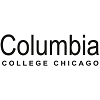
Columbia College Chicago (Columbia) was founded in 1890 as the Columbia School of Oratory. Serving nearly 7,000 students from all 50 states and 60 countries, Columbia offers 150 majors, minors, and graduate programs in the Schools of Media Arts, Fine and Performing Arts, and Liberal Arts and Sciences. The School of Fine and Performing Arts offers BA and BFA degrees in Graphic Design. A Second BA in Graphic Design is also available for students who have already earned a bachelor’s degree.
Students in the Graphic Design programs at Columbia will “develop advanced skills in typography, layout, information design, packaging design, and other applications through hands-on courses.” They will also learn the software and technology needed to “deliver dynamic visual communications,” and “gain experience in research and client management.” Business is a major component of the program, as it prepares students for positions in ad agencies, design firms, and in-house corporate design. It also prepares students to launch their own businesses.
BA Graphic Design students will take fewer credit hours in the major than BFA students will, and they are encouraged to choose a minor or double major in another program such as Advertising, Fine Arts, Motion Graphics, or Photography. BA students will choose a concentration in one discipline such as Publication Design, Web Design, or a general concentration.
The BFA requires more advanced courses in graphic design. Students in this degree track do not choose a concentration and they will take courses across disciplines including Publication Design, Visual Identity, and Web Design.
Students in both the BA and BFA programs have the opportunity to intern at firms such as Foote, Cone & Belding and Leo Burnett, and with clients like Procter & Gamble. Besides real-world experience, graphic design students will graduate from the program with polished portfolio to share with potential employers.
Graduates of the programs have landed positions at places such as Fjord (part of Accenture Interactive), Google, Leo Burnett, and Modern Luxury.
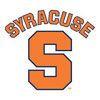
Syracuse University (SU) established some of the nation’s earliest architecture and fine arts programs. Founded in 1870, the school serves approximately 22,322 students enrolled in more than 200 majors and minors, and 200 advanced degree programs across 13 academic units. Programs are offered at SU’s main campus in Syracuse and at locations in New York City, Los Angeles, and Washington D.C.
SU houses the College of Visual and Performing Arts’ (VPA) School of Design and the S.I. Newhouse School of Public Communications. Both offer programs for aspiring graphic designers. Options include a BFA in Communications Design in the VPA School of Design and a Bachelor’s in Graphic Design offered in the Newhouse School.
Coursework for the BFA in Communications Design explores “the creative process, communications theory, design history, and project management,” says the school “in addition to illustration, photography, typography, and production processes.” Students in the program will have the opportunity to work on group or solo projects that incorporate advertising, marketing, packaging, publication, web and social media, and best business practices. Study abroad experiences in London, England, are also part of the program.
The Communications Design BFA culminates in VPA’s annual two-day senior portfolio show in New York City, open to design professionals in the tristate area. Graduates of the program work as designers and creative directors at many of the top firms in the country.
The Newhouse School’s Graphic Design program covers print, digital, web and video. Students in the program will learn “how to express ideas visually in every medium, using the latest technology, all while getting a well-rounded liberal arts education that prepares them for creative careers in a variety of digital, print, motion, immersive and emerging fields.
Program highlights include courses such as Introduction to Graphic Design, Typographic Design, and User Interface and User Experience (UI/UX) Design and the Fall Workshop, which “brings creative professionals in from around the world to serve as mentors for student projects.”
Newhouse Graphic Design graduates have landed positions at places such as Amazon, Google, and The Washington Post, and some have even started their own creative agencies.

The University of the Arts (UArts) was formed in 1876 by the merging of two century-old institutions: Philadelphia College of Art and Philadelphia College of the Performing Arts. In 1987, the school was granted university status, making it the largest institution of its kind in the nation. Today, UArts “is the only school in America that makes it possible to work and collaborate across traditional boundaries.”
UArts serves approximately 1,800 students enrolled in more than 40 programs at the University's Avenue of the Arts campus. Twenty-three minors are also available and open to all students. This means, aspiring graphic designers can take sculpting classes, creative writers can take classes in illustration, dancers can minor in ceramics, and industrial designers can study guitar.
Programs are offered through the Schools of Art, Dance, Design, Film, Music, and Theater. The College of Art, Media & Design houses the School of Design, which offers a BFA in Graphic Design and a BFA in Illustration with specialized graphic design courses.
The BFA in Illustration blends creative visual problem solving, digital experiences, drawing, figure modeling, illustration, painting, picture making, digital experiences, and graphic design, as well as self-discovery through mentor-student relationships, and history of pictorial image making. Course highlights include Anatomy & the Human Figure, Figurative Interpretation & Personal Voice, Illustration Markets and Promotion, Illustration with Digital Media, Motion-Based Illustration, New Media Illustration, Object & World Building, Printmaking, and the Illustration Thesis.
Students may also select one option from the following: School of Design Workshop, Illustration Workshop: Personal Viewpoint or the Design Internship.
Other program highlights include shared studio spaces, small class sizes, and training in industry-standard digital software such as Adobe Photoshop, Illustrator, InDesign and After Effects. Students also receive training in anatomy, integrating typography, experimenting with traditional painting methods, and developing narratives for a well-rounded experience across media.
Graduates of the BFA Illustration Program at UArts have gone on to create illustrations for ESPN, Fortune, Ralph Lauren, Random House, Rolling Stone, The New Yorker and New York Times, and many others.
The BFA in Graphic Design is a cross-disciplinary program that includes courses such as Design for Interaction, Design for Persuasive Visual Communication, Digital Design Lab, Drawing as Seeing and Meaning, Drawing as Thinking, Editorial Systems, and Image and Narrative. Students will also complete Portfolio and Brand Development, Real World Design, School of Design Workshop, and Senior Thesis I-II.
A Design Internship is also part of the program and some positions are paid.
Interns have the opportunity to work at professional venues ranging from individual artist studios to large branding firms such as Anthropologie (Urban Outfitters), Cartoon Network, and Sterling Publishing (Barnes & Noble).
Graduates of the UArts Graphic Design Program are prepared for employment in fields ranging from branding and motion graphics to publication design. Students and alumni have worked for 20th Century Fox, Blizzard Entertainment, Disney, DreamWorks, ESPN, Facebook Hallmark, Harper-Collins, Hasbro, Houghton Mifflin Harcourt, Knopf, Marvel Comics, MTV, NASA, National Geographic, Newsweek, Nickelodeon, NPR, Oprah, PBS, Penguin Group Publishing, Random House, Simon & Schuster, The Wall Street Journal, Time Magazine, and Warner Brothers.
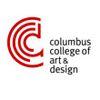
Founded in 1879 Columbus College of Art and Design (CCAD) is one of the oldest private art and design colleges in the United States. Serving nearly 1,100 students, the school offers 12 BFA programs and two graduate programs in a broad range of subjects and practice areas. Options for aspiring graphic designers include a BFA and a Minor in Advertising Design & Graphic Design.
The Minor is 15 credit hours and the BFA is a 120 credit hour program consisting of 60 hours of program requirements, 18 of CORE studio requirements, and 42 of CORE liberal arts requirements. Course highlights include Advanced Branding Concepts, Applied Design, Conceptual Copywriting and AD, Content Marketing Strategy, Motion Graphics, Digital Design Lab, Typographic Communication, UX Strategy & Interaction, and Web Strategy & Design.
Other program highlights include engagement in the professional community via co-ops and internships at top design, advertising, and digital agencies, participation in events such as the American Advertising Federation sponsored event The Pitch, which focuses on social change projects, and the opportunity to become a member of AdGraph Collective Community.
Graduates of the program are prepared to seek positions such as Art Director, Brand Manager, Copywriter, Digital Designer, Graphic Designer, Interactive Media Director, Social Media Manager, Web Designer/Developer, and many others.
Recent employers of CCAD BFA graduates include A&E Networks, American Greetings, Apple, Arc Worldwide/Leo Burnett, BBDO Worldwide, IBM iX, JPMorgan Chase, Ogilvy & Mather, Saatchi & Saatchi, and Young & Rubicam, to name a few.

Founded in 1974, Milwaukee Institute of Art and Design (MIAD) is Wisconsin’s only four-year, private college of visual art and design. The school is also a member of the Association of Independent Colleges of Art and Design (AICAD)—a consortium of 39 leading art schools in the United States and Canada.
MIAD serves nearly 900 degree-seeking students, 600 pre-college students, and 250 outreach/special programs students enrolled in five BFA degree programs and more than a dozen minors. Programs include Communication Design, Illustration, Interior Architecture and Design, New Studio Practice: Fine Arts, and Product Design.
The Communication Design BFA consists of 120 credits hours of study including 78 studio credits and 42 liberal studies credits. Minors that complement the program include Advertising, Art Management, Book Arts, Copywriting, and Digital Media Production.
Communication Design coursework begins with the study of 2D design and ends in the creation of a professional portfolio. Course highlights include Advertising Design, Computer Studio, Digital 4D, Information Graphics, Packaging Design, Research, Process & Connection, Service Learning, Systems of Drawing, and Visual Language. Students will complete Senior Writing Seminar and several Communication Design Thesis courses.
Throughout the Communication Design program, students will have the opportunity to take on internships at advertising and design firms in Milwaukee and across the U.S. They will also build their portfolio with real-world experience through MIAD’s Visual Resources Studio. “Self-promotion, presentation and collaboration will all be introduced and refined throughout the program,” says the school. Graduates of the program are prepared to work in marketing communication firms and major corporations.
MIAD Communication Design alumni hold positions such as Advertising Designer, Art Director, Graphic Designer, Package Designer, Storyboard Illustrator, and Web Designer. In addition, many graduates of head their own successful advertising agencies and design firms.

Founded in 1898 as an Evening Institute of the Boston Young Men’s Christian Association (YMCA), Northeastern University serves nearly 38,000 students enrolled in 150 undergraduate majors and concentrations and over 125 graduate programs in nine colleges and schools.
With nearly 6,000 students and 15 combined undergraduate degrees, the College of Arts, Media and Design (CAMD) offers a BFA in Communication Studies and Graphic & Information Design, and Minors in Graphic & Information Design and Communication Studies. CAMD also offers combined degrees for students interested in combining graphic design/communication studies with another major.
Options include BA's in Architecture and Graphic & Information Design, Communication Studies and Media Arts, Communication Studies and Graphic & Information Design, Design and Communication Studies, Media Arts and Communication Studies, and a BS in Communication Studies and Business Administration.
All degree options offer the opportunity to participate in the Northeastern Cooperative Education (Co-op) Program. This experiential learning program provides the opportunity to “explore potential career paths while alternating semesters of academic study with 6-month periods of full-time, paid employment.” The school partners with more than 2,000 co-op employers across the U.S. and in more than 65 countries around the world.
Undergraduates gain up to 18 months of hands-on, professional experience related to their major or career interests. During this time, students are exempt from paying tuition.
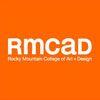
Rocky Mountain College of Art and Design (RMCAD) was founded in 1963 by educator and illustrator Philip J. Steele founded Rocky Mountain School of Art. Steele’s mission for this proprietary institution in the foothills of Colorado, was to build a “community of creatives” that that would instill in all students a passion for creativity, innovation, and a desire for lifelong learning in the fine and applied arts. Today, better known as Rocky Mountain College of Art and Design (RMCAD), the school is considered one of the nation’s premier art and design institutions.
Serving more than 1,000 students, RMCAD offers 16 degree and certificate programs available in campus/hybrid and online formats. The Graphic Design Program, which leads to a BFA, consists of 123 credit hours including 15 credits in Art History, 30 in Liberal Arts, 18 in Foundations, 48 in Communications Design, and 12 in Studio Electives.
“Graphic Design students learn to evaluate research and understand design problems by creating processes for design solutions that can be used throughout their careers,” says the school. They learn “branding, advertising, user-experience, and more—all while building a professional portfolio to prepare for life after” graduation.
Other program highlights include annual award shows used as class assignments, international instructors, and visiting faculty. Students also benefit from “interaction with outside design professionals through workshops, presentations, and advanced teaching engagements that “deliver hands-on experiences with real projects.”
Graduates of the RMCAD Graphic Design Program are prepared to pursue titles such as Communications Manager, Creative Director, Digital Project Manager, Multi-Media/Interactive Media Specialist, Production Art Manager, Web Designer, and many others.

Tulane University (Tulane) was founded in 1834. The school is ranked by the Carnegie Foundation for the Advancement of Teaching as a university with “very high research activity," placing it in the top 2% of universities nationwide in terms of research. Tulane is also the first major research institution to require public service for graduation.
Serving more than 12,000 students, the school offers more than 300 programs in nine schools. The School of Professional Advancement (SoPA) has several program options for aspiring graphic designers including BA, Minor, and Graduate Certificate in Digital Design. These programs have the option to choose the Graphic Design Track. A Graphic Design Minor is also available.
Certificate programs are 30 credit hours and comprised of all of the coursework required for the undergraduate major, without required courses in other subjects. Minors are 18 credit hours and consist of an introduction to graphic design topics such as typography and branding, as well as foundational courses in digital design.
The BA in Digital Design with a Graphic Design Track is a hands-on program that requires 120 credit hours of study to graduate. Course highlights include Branding/Corporate Identity, Business of Design, Designer as Author, Design for Good, Digital Page Layout, Environmental Design, Foundations in Interactive Design, Introduction to UX Design, Letterpress Studio, M.A.D. Studio, Motion, Narrative, Poster Design, and Social Media Studio. Students will also complete Portfolio & Professional Practices.
Other program highlights include the option to take courses in other tracks, 16 flexible elective credits, and access to professional conferences, symposiums, social events, and internship opportunities.
Graduates of the Tulane Digital Design Program work in book design, branding, front-end web and interactive design, packaging design, poster design, print design, publication design, typographic design, and more.

Established in 1979, Full Sail University offers AS, BS, BFA, MS and MFA degrees in the Arts, Entertainment, and Media. Graduate certificates are also available. The school serves approximately 15,000 students at a campus located just 35 minutes from downtown Orlando and Universal Studios.
Program options for aspiring graphic designers include a BS in Graphic Design that can be completed online in 29 months or on campus in 20.
Graphic Design students will “sharpen” their eye for “aesthetics through projects, critiques, and the study of popular culture,” says the school. In addition to technical proficiency and creative development, the program will help students “hone real-world skills such as media integration, advertising, and branding.” Course highlights include Concepts in Advertising, Creative Branding Experience, Digital Audio and Video, Digital Publishing, Graphic Web Design, Interactive Media Design and Usability, Logos and Symbols, Media Integration, and Technology in the Entertainment and Media Industries.
Students will also take a four credit hour career readiness course, two professional development seminars, and seven project and portfolio courses. Graduates are prepared to enter the field or enroll in Full Sail’s Media Design MFA Program.
Offered online, the program highlights areas such as Brand Development, Defining Client Needs, Design Integration, Design Strategy, Effective Copywriting, and Organizational Structures. The Media Design MFA takes just 12 months to complete.

Founded in November 1842, University of Notre Dame offers global experiences to enhance the schools 75 undergraduate programs and more than 20 graduate programs. Nearly 50 international study programs are available along with a network of 11 Global Gateways and centers in some of the world’s top cities.
Degree programs at the University of Notre Dame are offered in eight colleges and schools and to a student population of nearly 12,700 students. The College of Arts and Letters houses the Department of Art, Art History & Design, home of the Design Division, which offers degree programs leading to the BA, BFA, and MFA degrees in Design. Degree Concentrations in the Division include Industrial Design and Visual Communication Design.
The BA in Visual Communication Design (formerly Graphic Design) requires 36 hours of coursework (or 12 courses). The program is “suited to students who wish to double major or desire to create a custom experience combining visual communication design with art, art history, marketing, psychology, athletics…and more,” says the school. The BFA degree requires 66 hours of coursework (or 21 courses) in the major area and affords “a larger portfolio due to considerably more design studio experiences.” BFA candidates also have the opportunity to pursue a year long, self-driven thesis project.
Students in both programs can expect to take courses such as 2D and 3D Foundations, Art History, and Drawing. Seminars are part of the programs as well as study abroad in London or Rome. Internships at design firms in the Chicago area and across the country are also available.
Graduates of the Graphic Design Programs at University of Notre Dame have a wide variety of career opportunities from advertising to web design. Graduates hold positions such Animator, Book Designer, Environmental Graphic Designer, Experience Design, Illustrator, Interaction Designer, Type Designer, and Web Designer.

Vermont College of Fine Arts (VCFA) was founded in 1834 as Newbury Seminary. The school serves around 350 students enrolled in eight MFA programs. Established in 2011, the Graphic Design MFA is low-residency program designed for individuals with an academic background in communications, design, media arts, visual art and culture and/or professional experience in graphic design. The school highly encourages “aspiring and practicing design educators,” to apply and “familiarity with design history and contemporary visual culture studies is beneficial.”
Graduates of the program “emerge” with critical expertise, new research methods, and “a body of design work that is personal and relevant to the next stage in their careers and creative lives.” Skills developed include content, craft, and form, as well as fluency in contemporary design discourse.

Founded in 1925, University of Miami is a private research university that serves more than 17,000 students from around the world. More than 100 majors and programs are offered in 11 colleges and schools, including the College of Arts and Sciences—home to the Department of Art and Art History. Here, students can earn a BFA with a Concentration in Graphic Design/Multimedia.
Students in this interdisciplinary program may choose a secondary Concentration such as Photography/Digital Imaging or Printmaking and all students automatically minor in art history. Course highlights for the program include 3D Design, Drawing, Electronic Media, History of Graphic Design, and Modern Art.
Other program highlights include a curriculum “enhanced by Power Macintosh computer labs and spacious work areas,” says the school, along with internship opportunities in Miami and across the U.S.
Graduates of the Graphic Design BFA program work as creative directors and designers in the advertising and film and video industries, for PR firms and publishers, at web design studios, and more.

Chartered in 1845 by the Republic of Texas, Baylor University is the oldest continually operating university in Texas. The School offers more than 250 programs to more than 19,500 students from all 50 states, the District of Columbia, and 98 countries. Programs are offered in 12 academic divisions.
Created in 1919, the College of Arts & Sciences is Baylor’s largest academic division consisting of 25 academic departments and eight academic centers and institutes. The College’s Department of Art and Art History offers a Graphic Design Emphasis within the Studio Art Major. The program, which leads to a BFA in Studio Art – Graphic Design, “offers students the opportunity to develop their hand and aesthetic skills, and conceptual development,” says the school. Students in the program will take liberal arts, marketing, and visual arts courses and they have the opportunity to complete an internship.
Course highlights for the program include Advanced Photo: Digital, Design Methods, Digital Media for Graphic Design, Identity Design, Marketing, Package Design, Type and Image, and Web Design. A Portfolio Preparation course is also part of the program.
Graduates of the program have gone on to “work in design studios and major advertising agencies.” Others have “started design studios and advertising agencies of their own.”

Established in 1891 as Drexel Institute of Art, Science and Industry, Drexel University houses a cooperative education program that remains oldest, largest, and best-known program in the nation. Because it is a degree requirement for most majors, undergraduate students at Drexel have the unique opportunity to balance classroom theory with practical, hands-on experience prior to graduation. Students have had experiences in Ghana, Greece, Hong Kong, London, Spain, and many other places.
Serving 24,205 students, Drexel University offers more than 200 degree programs in 15 colleges and schools. The Westphal College of Media Arts & Design, houses the Graphic Design Program, which leads to a BS degree. A 24 credit hour Minor is also available.
The curriculum for the 183 credit hour Graphic Design BS is collaborative and project-based. It enables students to “develop a sophisticated approach to creative problem-solving and analysis,” says the school, and “to effectively communicate through excellence in typography and image-making.” Students will focus “in all aspects of visual communication and experience” including brand identity, data visualization, dynamic and time-based media environments, and experiential and spatial design.
Course highlights for the program include Book Design, Computer Imaging I: Introduction to Adobe Illustrator, Computer Imaging II: Intro to Adobe Photoshop, Corporate Identity, Information Graphics: Mapping, Wayfinding, Data Visualization, Motion Graphics: Storyboarding and Development for Time-based Media, Physics: Light and Sound, Production: Introducing the Tools and Methods of Production Management for Print and Screen Media, and Publication Design.
Students in the program have the opportunity to pursue electives according to their interests, and can choose to pursue a minor. Examples include Interactive Digital Media, Marketing, Nonprofit Communication, Photography, Product Design, Project Management, Sports Media Production, Technology, Virtual Reality & Immersive Media, and Writing. Graphic Design students will also complete a Senior Capstone and Professional Portfolio course.
Students and program alumni have secured co-op positions or full-time employment at such companies as Apple, Bloomberg, ESPN, Facebook, Marvel Entertainment, Penguin Random House, Saatchi & Saatchi, QVC, Time, Inc., Under Armour, Urban Outfitters, and many others.
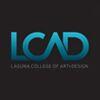
Established in 1961, Laguna Beach College of Art and Design (LCAD) began as Laguna Beach School of Art (LBSA). Inspired by “pioneering cultural ventures” of the early 1900s such as the Laguna Playhouse and the Laguna Beach Art Association, this not-for-profit institution serves more than 700 full-time students today, and it is considered one of the leading colleges of art and design in the U.S.
LCAD offers around 30 degree programs, minors, and specialized minors in areas such as animation, experimental animation, game design, illustration, and painting. One of the school’s most popular programs Graphic Design + Digital Media (GD+DM). With around 110 students, GD+DM is the third largest program at LCAD.
GD+DM Graphic Design, Graphic Design w/Illustration Emphasis and Graphic Design w/Action Sport Design Emphasis options. A GD+DM Minor is also available.
This multidisciplinary pathway covers 3D, action sport design, advertising, iPad development, motion, package design, print, video, and the web. Other program highlights include small class sizes, a partnership with Sony Music, an educational partnerships and mentorship programs that provide hands-on design, and internship opportunities.
Graduates of LCAD’s Graphic Design Program enjoy a 98% employment rate and most have found positions in their field. Alumni work for Adobe, Amazon, Apple, Billabong, Capitol Records, Coca-Cola, Disney Interactive, Facebook, Fox Entertainment, Nike, Pixar, Saatchi & Saatchi, Sony Music, Vans, Warner Bros., and many others.
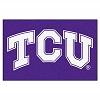
Texas Christian University (TCU) was Founded as Add-Ran College in 1873, Texas Christian University (TCU) serves nearly 11,500 students enrolled in 116 undergraduate, 65 master’s level and 38 doctoral programs in 10 colleges and schools. The College of Fine Arts houses the Department of Design, which offers a BFA in Graphic Design.
The program requires students to complete two-thirds of the credit hours at TCU university in the graphic design curriculum. “Several more in-depth topics courses round out the curriculum, including typography, advertising, packaging, corporate identity, editorial, web and interactive media,” says the school. A creative internship is part of the program as well as capstone classes, Portfolio & Marketing and Senior Thesis.
TCU Graphic Design BFA graduates have enjoyed a 100% job placement rate over the past four years.
Graduates typically work as creative designers or art directors at leading design studios and advertising agencies such as Deep Focus, Loyalkaspar, Pentagram, The Magazine at Pace Communications, Twilio, and Warren Douglas Advertising.

DePaul University was founded in 1898 by the Congregation of the Mission (of Vincentian) religious community. Serving nearly 22,500 students, the school is the largest Catholic university in the United States, the 13th-largest private, not-for-profit university in the nation, and the largest private, not-for-profit college in the Midwest.
DePaul offers more than 300 programs of study in 10 colleges and schools and across two campuses in Chicago. The College of Computing and Digital Media (CDM) houses the Graphic Design Program, which offers a BFA degree and a Minor.
The BFA in Graphic Design “integrates contemporary media and technologies, including web and interaction design, branding, illustration, motion graphics, typography, package design, and programming,” says the school. “Students learn both history and theory, acquiring skills to research, develop concepts and prototypes, and develop professional portfolios.”
Course highlights include Advertising Design, Animation for Non-Majors, Creative Studio Methods, Design Principles for User Experience Design, Digital Cinema Production, Digital Illustration, Motion Graphic, Playgramming, Publication Design, Semiotics and Visual Design, and Web Design for Commercial Projects. Students will also complete a number of workshops such as Illustrator, InDesign and Photoshop, along with a Capstone Project (Capstone I & II).
CDM encourages collaboration and internships and research opportunities are available with a range of studios and non-profits in Chicago.
Graduates of the program are prepared to seek positions at advertising and marketing firms, design studios, in-house design departments and more. Graduates are also prepared to enter the CDM MA in Digital Communication and Media Arts (DCMA) Program.
Students will take classes in advertising, digital media arts, digital public relations, graphic design, journalism, media production, and technology communication. Students will leave the program with experience in both technology production and communication studies. Career paths for graduates include digital product design and development, interactive media design, mobile communications, online content creation, online marketing, social media, and web design.

Founded in 1909, Pacific Northwest College of Art (PNCA) is a fine arts and design college that offers 12 undergraduate majors in art and design, eight graduate degrees, one Post-Baccalaureate program, and eight minors. Serving 650 students, the school has “Four Core Themes” including Critical Inquiry, Professional Practice, Studio Practice, and World View.
The PNCA Graphic Design Program, which leads to a BFA, “encourages integrated design solutions across media,” says the school “and fosters the development of research, critical thinking, and creative practice skills while being grounded in communication theory.” Course highlights for the program include 3D Design, Exploring Visual Culture, Time Arts, Visual Elements 2D, and Writing in Context. A number of independent and collaborative projects are also part of the program.
Graduates of the PNCA Graphic Design Program go on to successful careers at leading agencies and companies such as Nike, Microsoft, and Wieden+Kennedy. Many go on to launch their own creative agencies.

Cleveland Institute of Art (CIA) is an independent college of art and design that was established in 1882. The school serves approximately 600 students enrolled in 15 majors in Art, Craft, Design, and Digital Media. A unique component of all programs at CIA is students enter their major as a sophomore, allowing them three full years of building skills and mastering techniques instead of one or two.
The CIA Graphic Design Program, which leads to a BFA, covers editorial and publication design, event and exhibition design, interactive and motion graphics, print, marketing, and advertising design, and production. Course highlights include Contemporary Marketing + Art Direction, Design for Communication, Graphic Design for Non-Majors, and Graphic Design: Advanced Studio. Students will also complete the Graphic Design BFA Thesis and Graphic Design: BFA Statement + Exhibition.
Other program highlights include the opportunity to collaborate with Industrial Design and Interior Design students on projects and in the classroom. The integrated curriculum will help students "build valuable communication skills and develop techniques" for presenting their ideas and final projects.
Graduates of the program are prepared to seek positions such as Advertising Designer, Art Director, Associate Partner, Book Designer, Designer + Founder, Film Director + Writer, Magazine Designer, and many others.

Founded in 1884 as Woodbury College, Woodbury University is one of the oldest institutions of higher education in Southern California. When it was founded, Woodbury University was committed to diversity, so the school’s first class was made up nearly equally of males and females. Today, this commitment to diversity remains one of the school’s core principles. The current male-female ratio is 51% female and 49% male.
Woodbury serves nearly 1,200 students on campuses in Los Angeles/Burbank and San Diego. The school offers 26 practice-based, fully accredited professional and liberal arts majors through four colleges and schools including the College of Liberal Arts and the Schools of Architecture, Business, and Media, Culture & Design.
The School of Media, Culture & Design offers a BFA in Graphic Design. Like all programs in the School, the interdisciplinary Graphic Design program encourages exploration in the “areas between and around” the discipline as students “develop their personal vision and professional paths,” says the school. For example, “Graphic Design students might select a consumer behavior course in psychology to better understand the factors that influence purchasing decisions.”
Other program highlights include small classes taught by nationally recognized faculty, a focus in motion design—a growing segment of design, the opportunity to create projects in advertising, apps, branding, entertainment, packaging, publication, and the web, and access to a designated senior studio with individual working spaces for both digital and production work.
Students will have the opportunity to create portfolios in the areas of advertising, entertainment, environmental or motion design, and publications. An internship is also a required component of the program. Students have interned at 20th Century Fox, Disney Imagineering, Mattel Inc., MTV Networks, Saatchi & Saatchi LA, Screen Actors Guild Foundation, The Getty Center, Universal Studios, and more.
Graduates have been placed at top design firms and entertainment agencies and they have won numerous international and national design awards. Careers include app design, art direction, branding and identity design, environmental or exhibition design, interactive media, print production, signage and wayfinding design, UX design, web design, and many others.

Established in 1855, the University of San Francisco (USF) is the city's first university. When it opened, the school had just three students. Today, USF serves more than 10,000 students from the U.S. and around the world.
More than 100 undergraduate majors and minors and over 60 master’s doctoral, and credential programs are offered in five colleges and schools including the College of Arts and Sciences and the Schools of Education, Law, Management, and Nursing and Health Professions. The College of Arts and Sciences houses the Department of Art + Architecture, which offers a BA and a Minor in Design.
The Minor requires 20 units of study and the BA requires 49 units in the major. Coursework for both options covers graphic design, digital media design, and environmental design. Required and elective course highlights include Advanced Typography, Copy Culture, Critical Brand/Package Design, Exhibition Design Practicum, Fabrication Lab, Information Visualization, Interaction Design, Professional Practice in Design, and Visual Communication. Students will have the option to choose one of two design seminar electives including Design & Social Change or Sustainable Systems in Design.
A senior design project is required as well as a design internship that “provides students a supervised work experience within a professional Bay Area design setting that complements the theoretical, methodological and practical instruction received in the Design major,” says the school. Students will also gain hands-on experience by using “advanced production methods and digital technologies” to complete coursework and projects in the school’s “state-of-the-art computer labs.”
All Design students have access to paid opportunities at USF's Graphics Center and AIGA membership. The Graphics Center is a student-run organization that designs posters, flyers, banners, t-shirts, brochures, and more. AIGA offers the chance to participate in workshops, field trips, lectures, exhibitions, and other events on campus and within larger communities in the San Francisco Bay Area.

Established in 1904, Loyola University New Orleans (Loyno) is one of 28 Jesuit colleges and universities in the United States. The school serves around 4,550 students enrolled in 110 undergraduate programs and 36 graduate and professional programs in five colleges.
The College of Music and Media houses the Design Department, which offers a BDes, Bachelor of Interactive Design, and a Minor in Design. All programs prepare students for a career in Graphic Design. Each begins with begins with “intense coursework covering basic design principles, typography, imagemaking, and history/theory,” says the school, “followed by more specialized classes dealing with subjects such as type design, interactive design, motion graphics, and publication design as each year builds upon the prior year’s study.”
The Interactive Design program covers new media, user experience design (UX), and user interface design (UI). Course highlights for the programs include Business of Design, Design History, Illustration Design, Interactive Design, Motion Design, Print Design + Narrative, Professional Design Practice, Social/Political Design, and Typography. Students will also take Design Capstone (three credits) and complete the Design Internship three (3 credits).
Students have interned at places such as the Louisiana State Theater Festival, Louisiana Philharmonic Orchestra, New Orleans Opera Association, New Orleans Jazz and Heritage Festival, New Orleans Museum of Art, and Peter Mayer Advertising.
Graduates of the Design Programs at Loyola are prepared to pursue positions such as Graphic Designer, Exhibition Designer, Motion Graphics Designer, and Web Designer, to name a few.

Founded in 1850 by the Society of Mary (Marianists), University of Dayton (UD) serves nearly 11,700 students enrolled in more than 80 undergraduate and 50 graduate and doctoral programs. Degrees are offered in the College of Arts and Sciences and the Schools of Business Administration, Education and Health Sciences, Engineering, and Law.
With a 97% employment rate or graduate school enrollment within six months of graduation, the College of Arts and Sciences houses the Department of Art and Design, home to the BFA in Graphic Design.
Approximately 65% of the requirements for this professional degree program are in the study of graphic design. The curriculum covers design methods and design theory, “and provides the visual, conceptual, and technical skills needed to be a successful designer,” says the school. Course highlights include Computer Illustration, Design Processes, Drawing for Graphic Design, Form & Concept, Graphic Design I-III, Graphic Design for Three Dimensions, Motion Design, Typography, and Visual Communication Design.
Students will complete the capstone courses—Senior/Professional Seminar and Portfolio and Paper, along with an optional graphic design internship repeatable up to nine semester hours. Co-op education experiences are also available as well as career workshops, seminars and training “on a variety of career-related topics, such as resume preparation, interviewing, job strategy, career fair preparation, salary negotiation and more.”
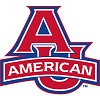
American University (AU) was founded in 1893. The school serves more than 14,000 undergraduate, graduate, and law students enrolled in nearly 200 program at all degree levels. Programs are offered in eight colleges and schools, including the College of Arts & Sciences, which houses the Art Department—home to Graphic Design Program. Pathways include a BA and a Minor in Graphic Design. Students may also earn both undergraduate and graduate degrees through AU’s combined bachelor's/master's programs.
The Graphic Design Program “teaches the theory and practice of graphic communications design,” says the school. Courses cover corporate identity, experience and interactive design, illustration, multimedia, packaging, poster design, publication and editorial design, and more.
Course highlights for the BA program include Advanced Design: Publication Design for Print & Digital Media or Visual Branding & Design Systems, Data Visualization & Information Design, Digital & Emerging Media Design, Experience Design: Interactive Media & Mobile Devices, Kinetic & Sequential Graphics, Packaging Design, The Artist's Perspective: Digital Photography, Visual Communication Design, and Visual Concepts & Image Making for Design.
During the final year of the program, students will have the opportunity to complete an independent study project, Interactive Experience Design: Senior Projects, and/or an internship.
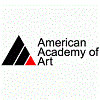
The American Academy of Art College was founded in 1923 as a school for professional artists seeking careers in the commercial and fine arts fields. Today, this small, private institution serves more than 200 students enrolled in seven programs leading to a BFA degree. All programs require 122 semester credit hours over the course of eight full-time semesters.
In the school’s BFA in Graphic Design program students will learn how to “combine typography and images to create a wide variety of designs such as magazine and newspaper advertisements, television storyboards, product packaging and displays,” says the school. They will also master the use of “industry-standard graphic arts equipment and software to produce fully functioning electronic files.”
Project management is a component of the program.
Course highlights for the BFA in Graphic Design include Corporate Branding Design, Design Methodology, Digital and Pre-press Production, Editorial/Book Design, Environmental Design, Interactive Design, Packaging Design, Studio Lighting and Techniques, Survey of Illustration, and Typography. Students will complete an Internship and Portfolio in Visual Communications.
Graduates of the program are prepared for career opportunities at advertising agencies, design studios, government agencies, publishers, printing companies, in corporate art departments, and as freelance designers. Possible job titles include Art Director, Corporate Identity Designer, Editorial Designer, Graphic Designer, Illustrator, Page Layout Artist, Package Designer, Production Manager, and many others.

Founded in 1982, Pennsylvania College of Art and Design (PCA&D) is a private, non-profit, professional art college serves around 250 students enrolled in 12 minor programs, seven certificate programs, and five majors leading the BFA degree. BFA options include Animation and Game Art, Fine Art, Graphic Design, Illustration, and Photography & Video. In addition to the Graphic Design BFA, PCA&D offers a Minor in Graphic Design and a Communication Design Certificate.
The curriculum for the BFA in Graphic Design consists of “conceptual and technical courses that are enhanced by gradual involvement with clients,” says the school. All courses are taught by “freelance or full-time designers who bring professional jobs to the classroom as competitive assignments.” Course highlights for the program include Advanced Web Design, Advertising/Copywriting, Design Studio, Digital Design Production, History of Graphic Design & Emerging Trends, Interaction Design, Motion Graphics, Packaging, Social Media & Marketing & Communications, Time-Based Media, and Web Studio.
Students in the program will also complete Professional Practices/Portfolio Preparation and a required senior internship. They also have the option to add a minor or certificate such as Business in Creative Industry, Illustration or Print.
At the end of the BFA program, students will complete a final portfolio and present at the senior exhibition.
